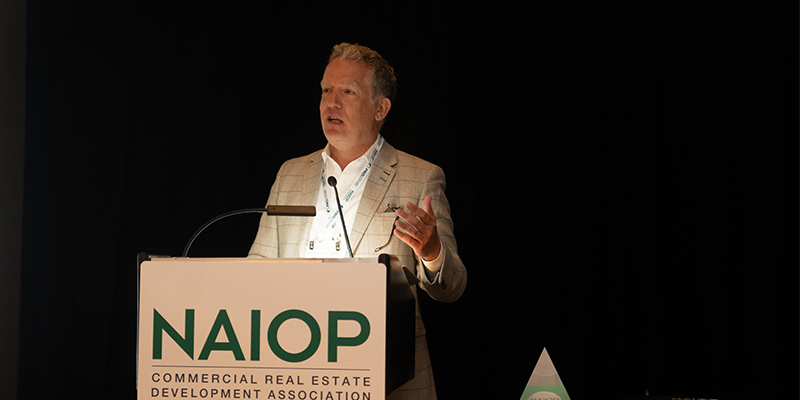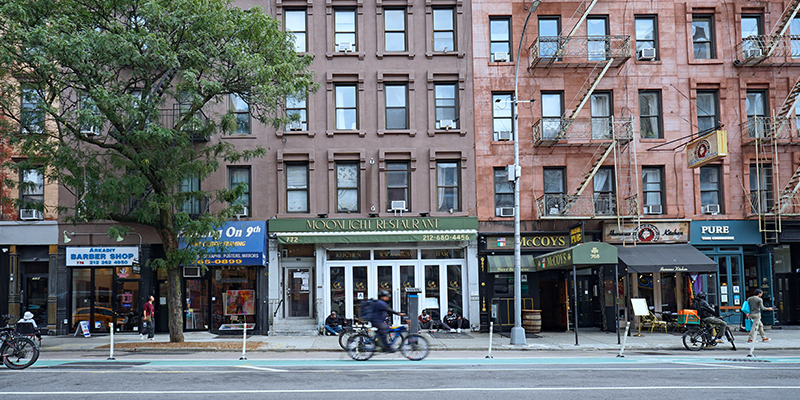The office market is still struggling with high interest rates and high levels of remote work, producing a tough lending environment and frozen deals on the sales side, and generous concessions and terms that favor tenants on the leasing side.
In tech hubs like Seattle, the market has been getting worse. That said, there are glimmers of hope, according to office experts at NAIOP’s CRE. Converge 2023 in Seattle.
On the panel were moderator Phil Mobley, national director, U.S. Office Analytics for CoStar Group, Inc.; Todd Battison, senior vice president and shareholder, Kidder Matthews; and Jason Flynn, CFA, managing director, Eastdil Secured.
The panelists said the office market has been evolving post-pandemic as companies figure out how they plan to use office space. Unlike downturns and upswings in the market, the office sector is likely seeing a permanent change in companies’ office usage. How it all shakes out is not yet clear, but traditional office does have future, they say.
“One important point here from talking to other professionals is that we’re not just talking about a cyclical downturn, we’re talking about a paradigm shift, how people value the office, how often they come in the office,” said Battison.
This sorting-out period is affecting all aspects of the market, from how tenants evaluate their leases and space needs, the values, and how lenders and investors react to new project proposals and sales deals.
“From my perspective in dealing with trying to sell finance assets and get capital there [to a deal], it’s really a function of utilization and how do you underwrite that demand going forward,” Flynn said. Flynn pointed to how tech companies are adding employees but shedding space in offices significantly.
“So, the question is, are they just not coming to the office or are they building the space out differently? And I think that from my perspective, that story is still playing out.”
Mobley kicked off the session with three trends in office noticed by Costar analysts. Firstly, office usage by companies is down to about 60% compared to the pre-pandemic norm, and that figure has been stable since the beginning of the year. Secondly and surprisingly, he said, office jobs fully recovered after 20 months rather than the six years they took after the Great Recession. And thirdly, he said, the growth of office employment has slowed down this year.
“Interestingly and paradoxically, there are at least as many active tenants in the market as there were, they’re just taking less space,” Mobley said.
“So, if you talk to brokers, which I do all the time, they’ll say, ‘Oh, we’re busy and there’s a lot of activity in the market,’ and they’re right,” Mobley said. “It’s just that those tenants are taking less space, they’re renewing with lower frequency … that’s actually causing a shrinkage of overall demand and occupancy in the market even though there is activity.”
The leasing side remains grim on many levels. Tenants have the upper hand in deals and are demanding discounts off the face rate and usually want generous concessions, like a month’s free rent in every year of the lease term, Battison said. Tenants are looking for high-quality buildings with amenities and away from urban problems, such as crime and homelessness. This means that outdated buildings in sketchier areas will likely struggle.
“We’re seeing lease packages, like 19 months of free rent on an 11-year deal with $150 in tenant improvements for a big deal,” Battison said. “It plugs a hole in a building. I just came to agreement on a small 5,000-square-foot deal yesterday with 12 months of free rent for a 65-month term.”
Not all is grim on the leasing and sales side. Flynn noted that several large companies, such as Roblox and Nike, have recently called back workers to the office or increased the number of required office days.
On the sales side, while the market had been frozen on the West Coast for months, activity is picking up again, particularly in San Francisco.
“San Francisco is kind of leading us out of that and maybe it’s because it was kind of feeling the pain earlier and maybe it’s because it’s got this international gateway city reputation,” Flynn said. “But in San Francisco there have been 12 deals this year. Six have closed, four are in contract and two are bidding in real time.”
Panelists noted that sales prices have been impaired, partly driven by high interest rates. Mobley said the peak-to-trough decline is roughly 30%, but some cash or low-leverage buyers of assets valued at $15 million or less – which is a type of office building that is still trading – are getting a 60% or 70% discount.
Despite the sector’s struggles and uncertainty, Flynn believes these issues are largely cyclical and the sector will rebound.
“I don’t believe that office … is done,” he said. “It is too important, I think, to the overall corporate strategy and I think the CEOs are learning that as they go along.”

This post is brought to you by JLL, the social media and conference blog sponsor of NAIOP’s CRE.Converge 2023. Learn more about JLL at www.us.jll.com or www.jll.ca.








